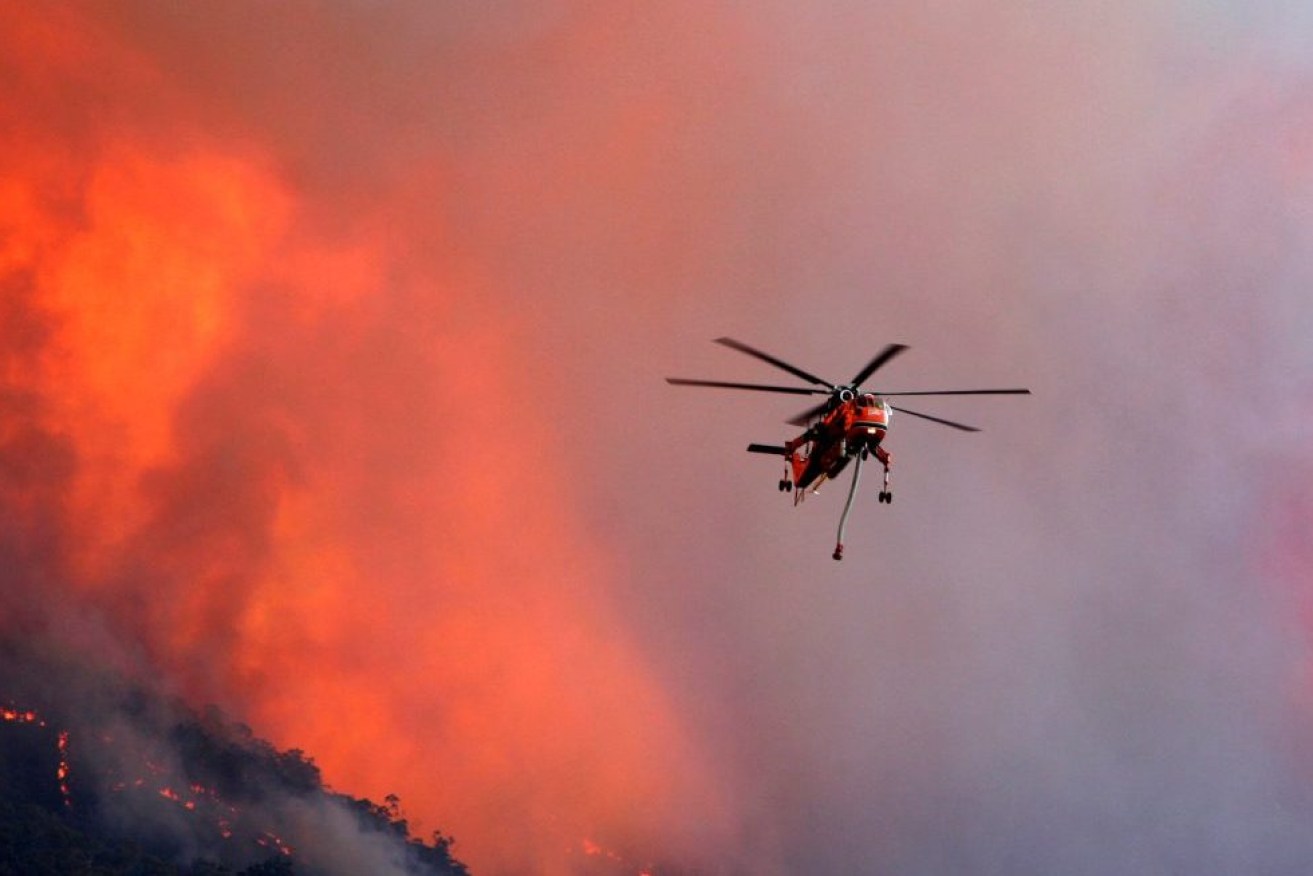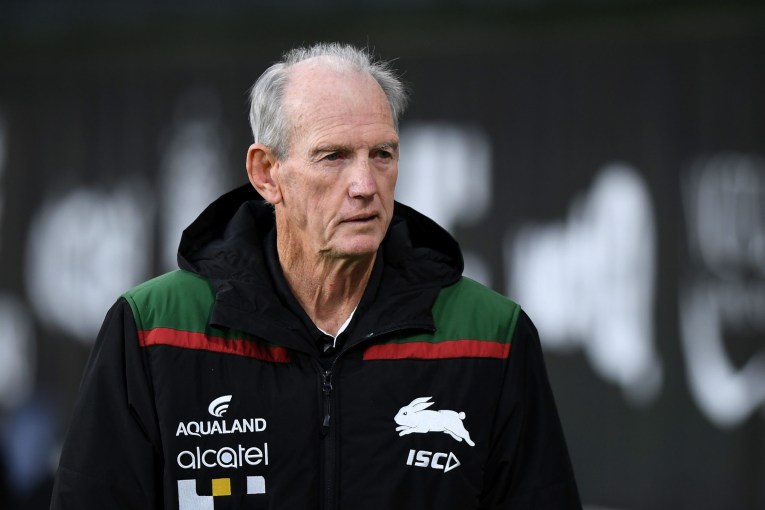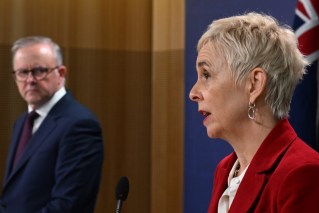Possible ‘compounding and cascading’ disasters looming
Australia could feel the “compounding and cascading” impact of cyclones, floods, bushfires and heatwaves all at once this summer.

A firefighter helicopter battles a blaze at Tawonga Gap in Victoria, (AAP Image/Chris Hocking) NO ARCHIVING
Co-ordinator-general at the National Emergency Management Agency Brendan Moon has warned Australians to keep other natural disasters in mind as the country braces for its worst bushfire season since the disastrous Black Summer blazes.
“Yes, we are going to experience a warmer, drier spring and summer, but we also should prepare for the possibility of cyclones, floods, bushfires and also heatwaves,” he told reporters on Monday.
The federal government will address these issues at its first National Bushfire Preparedness Summit at Parliament House on Monday.
The two-day event will host 250 representatives from federal, state and territory governments, alongside experts from emergency services, industry and not-for-profit organisations in an attempt to unite disaster management agencies and ensure a cohesive response to the bushfire season.
A simulated bushfire exercise will focus on preparedness, response and relief.
It will also examine approaches for vulnerable people including those living with disabilities and Indigenous communities.
Preparations for the 2023-24 season are already well-advanced and Emergency Management Minister Murray Watt says he has confidence in the plans.
Though the fire season is also “unlikely to be as catastrophic” as the Black Summer fires, Senator Watt said the country needs to begin reducing its reliance on defence forces for disaster seasons.
During the Black Summer fires, more than 7000 defence personnel were deployed to help with the emergency.
A parliamentary review found this reliance could reduce the country’s defence capabilities.
“The reality is we have a defence force primarily for the defence of the nation and we do live in a more uncertain strategic environment internationally than what we have in the past,” Senator Watt told reporters on Monday.
“We need to recognise that every time we take our defence forces out to work in disaster situations, that’s time they’re not doing their own training and their own preparedness for their core job.”
One possible solution proposed includes a national community service style of firefighting.
“The climate is changing, the number and intensity of disasters that we’re facing is changing and that means we need to think at the federal level about what kind of support we can provide,” Senator Watt said.
The 2019-20 bushfire season killed at least 34 people and destroyed more than 2000 homes, cloaking east coast skies in a blanket of ash for weeks and burning through an estimated 24.3 million hectares.
Since then, a new and simplified fire danger rating system has been introduced to help Australians better understand fire risk and ongoing funding for the national aerial firefighting fleet has doubled to $30 million.
The federal government, states and territories have invested $94 million for bushfire mitigation and preparedness this year.












